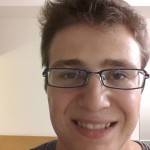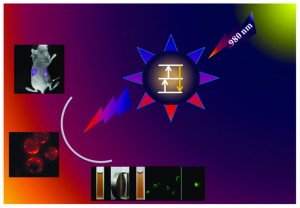Posted on behalf of Josh Campbell, web writer for CrystEngComm
Rare earth metals and their compounds are some of the most important elements in modern economies and science. They can be found in superconductors, catalytic converters and lasers. Most rare earth ions also show the phenomenon of upconversion (UC). UC is the emission of light at shorter wavelengths than initially absorbed at for example the conversion of infrared to visible light. UC effects show great promise in the bioimaging field, providing narrow emission bandwidths and high-signal to noise ratio due to being able to use near infra-red sources of excitation. Rare earth halides are known to increase UC luminescence but chlorides and bromides are usually sensitive to moisture and not suitable for labelling biomolecules.
A new highlight shows the most popular way of synthesizing rare earth fluorides and their applications as luminescent labels. Thermal decomposition is the most common synthesis method and gives nanocrystals with well-defined shapes and good size selectivity. However there are drawbacks (such as the strict experimental conditions) which have led to the development of coprecipitation and microwave assisted methods among others. These nanoparticles with UC properties have also recently shown promise being used as multimodal imagers. Multimodal imaging uses more than one technique and work is being done to integrate magnetic components into UC nanocrystals to combine MRI and luminescent imaging.
Find out more from the article:
Rare earth fluorides upconversion nanophosphors: from synthesis to applications in bioimaging
Song Wang, Jing Feng, Shuyan Song and Hongjie Zhang
CrystEngComm, 2013, Advance Article
DOI: 10.1039/C3CE40679B, Highlight
 Josh Campbell is a PhD student currently at the University of Southampton studying crystal structure prediction of organic semiconductors. He received his BSc from the University of Bradford.
Josh Campbell is a PhD student currently at the University of Southampton studying crystal structure prediction of organic semiconductors. He received his BSc from the University of Bradford.











